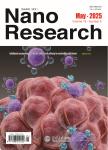版权所有:内蒙古大学图书馆 技术提供:维普资讯• 智图
内蒙古自治区呼和浩特市赛罕区大学西街235号 邮编: 010021

作者机构:Department of Interventional RadiologyThe First Affiliated Hospital of Soochow UniversitySuzhou 215006China Institute of Functional Nano&Soft Materials(FUNSOM)Jiangsu Key Laboratory for Carbon-based Functional Materials and DevicesSoochow UniversitySuzhou 215123China
出 版 物:《Nano Research》 (纳米研究(英文版))
年 卷 期:2025年第18卷第2期
页 面:586-593页
核心收录:
学科分类:1002[医学-临床医学] 100214[医学-肿瘤学] 10[医学]
基 金:This work was supported by the National Key R&D Program of China(No.2022YFB3808100) the National Natural Science Foundation of China(No.32371476)
主 题:garlic-derived nanoparticles γδT cells tumor microenvironment antitumor effects
摘 要:γδT cells have emerged as a promising target in tumor therapy,prompting the development of novel strategies to activate these cells directly within the tumor *** this study,we engineered uniformly sized spherical garlic-derived nanoparticles(GNPs)to stimulate tumor-infiltratingγδT *** intratumoral injection of GNPs,we demonstrated their ability to directly activate γδT cells,leading to potent antitumor *** approach resulted in significant inhibition of various subcutaneous tumors in ***,under computed tomography(CT)guidance,intratumoral injection of GNPs effectively suppressed the growth of orthotopic liver cancer in New Zealand white *** studies revealed that GNPs robustly activated γδT cells,promoting an inflammatory microenvironment within *** approach of using garlic-derived nanoparticles offers the advantages of simplicity in preparation and high yield,presenting a promising avenue for tumor therapy with potential for clinical translation.